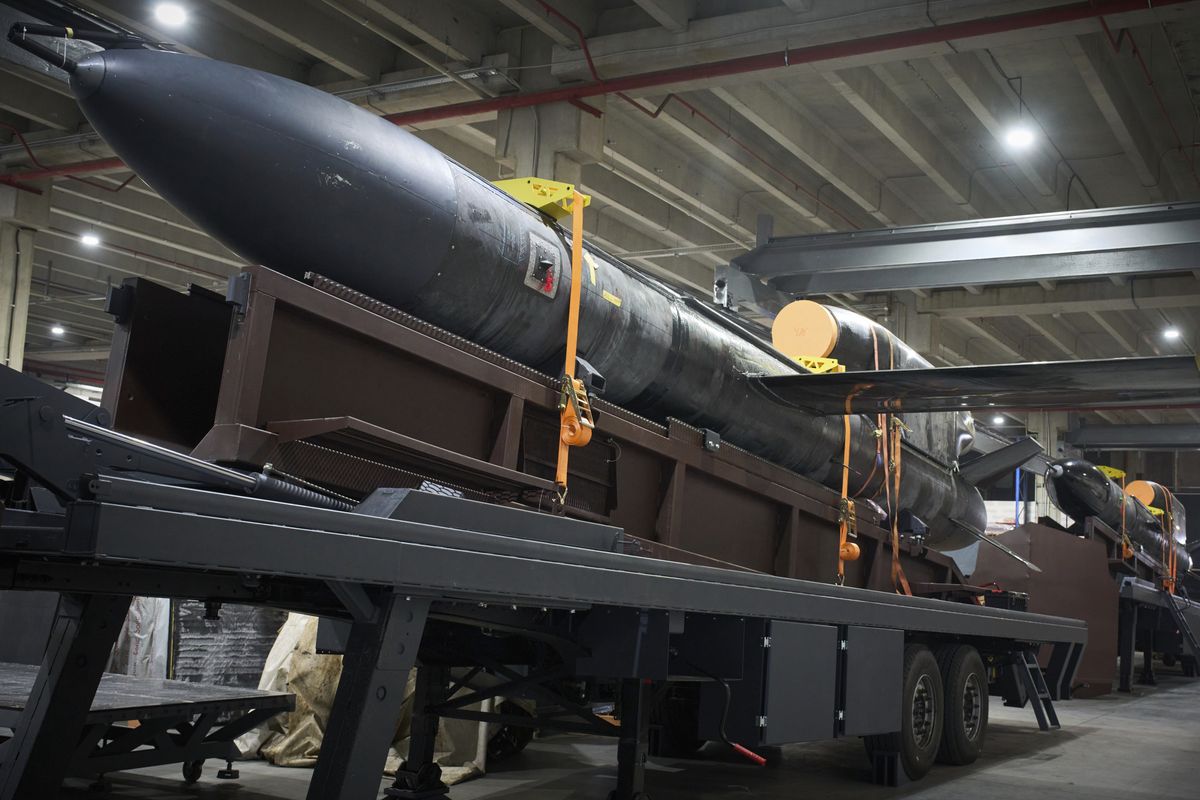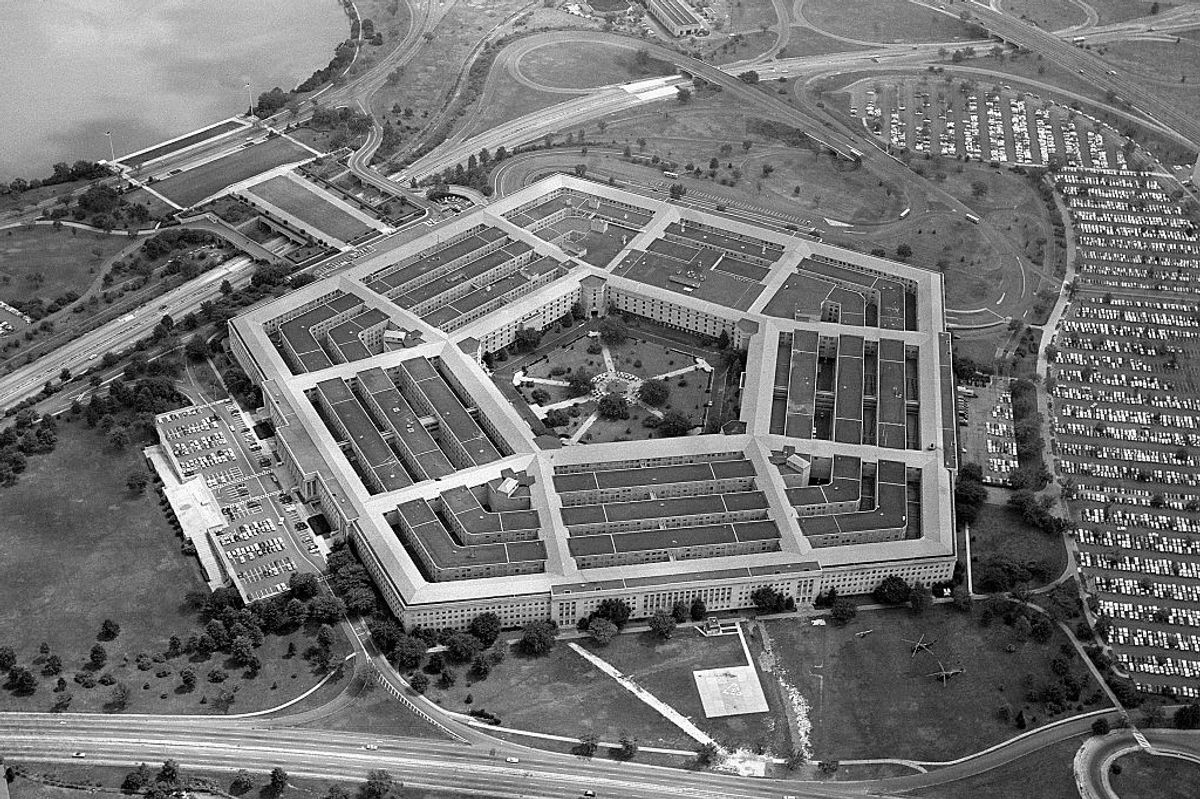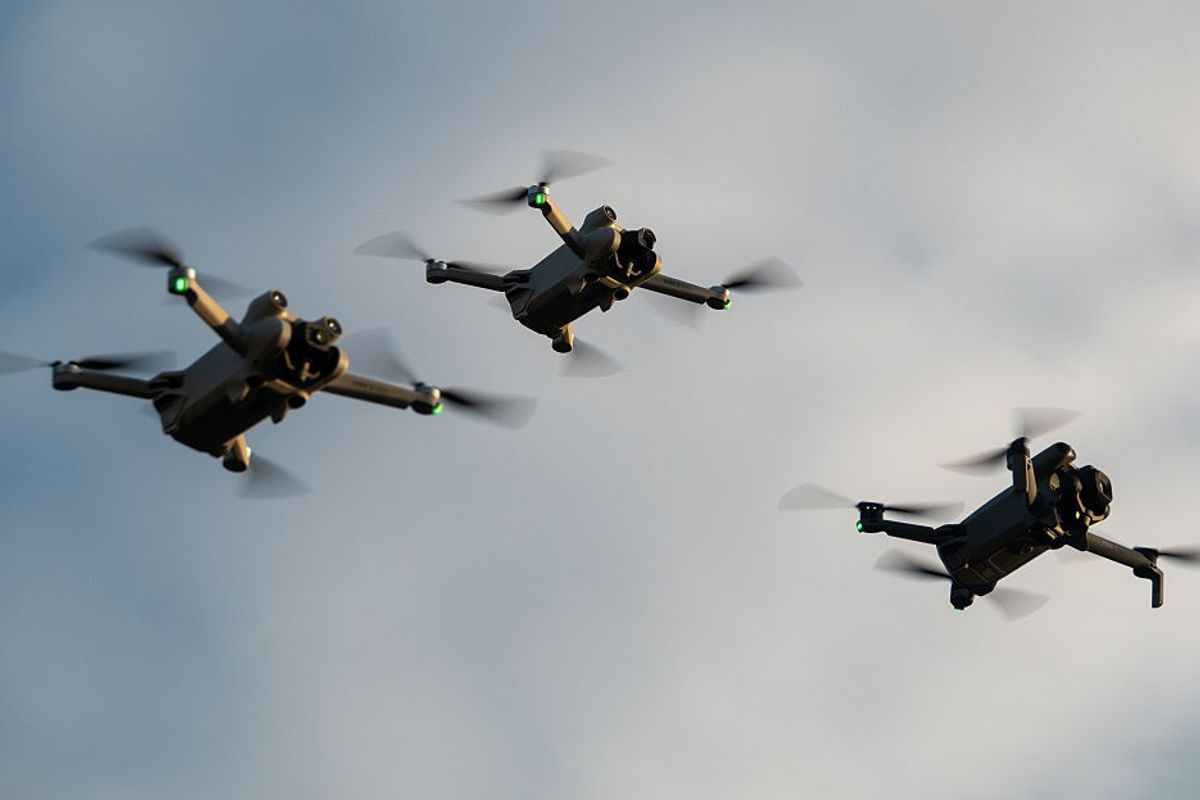OPINION — “The space-based interceptor piece was not in the [missile defense] architecture plan as we were before January 27 [when President Trump announced his Golden Dome program]. And, congressman, the only point I will add…is [that the Trump Golden Dome] executive order also called out left of launch [meaning pre-launch] missile defeat — I think that's an important aspect of missile defense that has been neglected to date and focusing capabilities and efforts towards the attriting of a missile force prior to launch is an important aspect of the holistic missile defeat program.”
That was Lt. Gen. Sean Gainey, commanding general of the U.S. Army Space and Missile Defense Command, speaking last Wednesday before the House Armed Services Strategic Forces Subcommittee about missile defense.
There have been gains made in missile defense, as identified in last week’s hearing, and I will discuss them below.
But I focus initially on that portion of Gainey’s remarks above because in layman’s terms, what the general was talking about – using terms such as “left of launch” and “attriting of a missile force prior to launch” – referred to what was known as a “First Strike” attack to those of us who lived through the original U.S.-Soviet Cold War.
The fear was that the Soviets were planning a “First Strike” to try to knock out all the land-based U.S. nuclear intercontinental ballistic missiles (ICBMs) and strategic bombers – and it was that threat that led to an expansion of the U.S. sub-launched ballistic missile (SLBM) fleet. Those additional nuclear SLBMs enabled the U.S. to be sure it would have enough surviving nuclear weaponry to deliver a knockout blow to any country attempting such a first strike.
Deterring an enemy first strike is the reason given for the current costly U.S. modernization of all three legs of the current U.S. “Triad” in its nuclear arsenal – the ICBMs, bombers and strategic submarines. They are there to deter any first strike from Russia, China or any other potential attacker.
What those first strike fears in the 1950s and 1960s led to was a strategic nuclear arms race between Washington and Moscow, where at one point each side had ten thousand or more strategic nuclear warheads.
Today, Russia, the U.S. and China are already in a mini-nuclear arms race, with the introduction of land-based and perhaps space-based hypersonic weapons – and so the potential for U.S. space-based missile interceptors, as contemplated in President Trump’s Golden Dome executive order, has put a whole new first strike threat in motion.
The intersection of technology, defense, space and intelligence is critical to future U.S. national security. Join The Cipher Brief on June 5th and 6th in Austin, Texas for the NatSecEDGE conference. Find out how to get an invitation to this invite-only event at natsecedge.com
Ironically, history has shown that the first strike idea originally arose in the minds of post-World War II U.S. military planners, who had in mind Pearl Harbor, the December 7, 1941, Japanese attack that attempted to knock out the U.S. Navy’s primary Pacific battle fleet. At that time, America had a nuclear weapon monopoly and the U.S. shifted its concerns about a first strike idea to the threat from the Soviets, thus requiring more U.S. strategic weapons. That 1960s U.S. buildup, seen by Moscow, generated more Soviet weaponry, and the arms race was on.
President Trump’s version of the fiscal 2025 reconciliation bill includes $25 billion for the Golden Dome defense, of which $5.6 billion is to develop space-based, boost-phase intercept weapons. The boost phase is where ballistic missiles and hypersonic boost-glide vehicles are moving at their slowest pace and are at their most vulnerable, because their bright plume of hot gas at launching also makes them easier to spot and track for an intercept attempt.
Retired Space Force Col. Charles Galbreath, senior resident fellow at AFA’s Mitchell Institute for Aerospace Studies, told the airandspaceforces.com website last month that the Defense Department under Golden Dome was likely to research and demonstrate kinetic and non-kinetic interceptors, including directed energy weapons.
“Directed energy reduces travel time, which gives you a bit more margin,” Galbreath said — an important advantage when the boost-phase window lasts only a few minutes. In the 1980s, under President Ronald Reagan, the Strategic Defense Initiative undertook experiments with lasers, particle beams, and gamma rays to try to disable missile threats in their boost phase.
Space Force Chief of Space Operations Gen. Chance Saltzman last month told Defense One, “It’s not just that we want space-based interceptors, we want them in [the] boost phase… So they’ve got to be fast, they’ve got to be accurate.” He acknowledged, however, “I think there are a lot of technical challenges.”
Describing Golden Dome in a broader sense, Saltzman said, “It’s not a system. There’s not going to be a Golden Dome delivered. It’s a system of systems that has to work together. And so there won’t be a single contract vehicle. There will be multiple programs that are brought to bear to solve that mission against the threats.”
Everyone needs a good nightcap. Ours happens to come in the form of a M-F newsletter that provides the best way to unwind while staying up to speed on national security. Sign up today.
Back at last week’s House Armed Services Subcommittee meeting, Air Force Gen. Gregory Guillot, Commander, U.S. Northern Command, described Golden Dome as taking in “all of the existing requirements that we had, but for the first time integrates multiple layers into one system that allows us to detect, track, and defeat multiple types of threats that affect us in different domains with one system. So while a lot of the components and the requirements were there in the past, this is the first time that it's all tied together in one system. And yes, there were certainly space-based ability to detect and track prior to this.”
Air Force Lt. Gen. Heath A. Collins, USAF Director, Missile Defense Agency (MDA) told the Subcommittee, “A space engagement layer would complement land- and sea-based defenses… From a missile defense architect and developer perspective, a space-based missile defense layer would offer numerous benefits, including a persistent on-call global presence, which would reduce the risks associated with hostile missiles launched with little or no notice from different regions around the world.”
Collins also said MDA “is developing a multi-layered defensive architecture to counter hypersonic threats in defense of the homeland. This architecture leverages advanced sensors for early warning, identification, and persistent tracking of hypersonic threats.”
To address the various threats, Collins said current MDA initiatives include “enhancing persistent tracking of unpredictable targets, improving communication systems, adapting fire control strategies, and developing new kinetic interceptors with exceptional agility in extreme aerothermal [heating over space objects] environments.”
MDA, Collins said, “is prioritizing the integration of Directed Energy (DE) systems [laser beams] into the Missile Defense System, which would reduce the burden on kinetic interceptors and augment existing capabilities…[MDA has] initiated work on a phased, long-range detect and track rapid prototype, coupled with a kill laser. Conceptually, a High Energy Laser can thin out the number of objects in an attack, lower the cost per kill, and provide a nearly unlimited magazine.”
Iron Beam, an Israeli air defense laser system in which the U.S. has invested, is being tested as part of Israel’s Iron Dome system this year. According to its Israeli manufacturer, Rafael Advanced Defense Systems, once a potential threat is detected, Iron Beam shoots hundreds of the small, coin-sized beams in its direction. The small beams do not get dispersed in the atmosphere; however, they are not powerful enough to destroy a target by themselves. When one hits the target, it stays locked on and more beams are directed its way.
Meanwhile, Collins said, MDA’s High Energy Laser for Regional Airborne Defense (HELRAD) program “explores the application space for state-of-the-art directed energy systems as they apply to future MDA architectures, identifying opportunities for MDA's future DE programs.”
Another issue for Golden Dome, Collins said, “is its ability to command and control all integrated elements.”
The current Command and Control, Battle Management and Communications (C2BMC) system, Collins said, “proved its value in integrating real-world combat operations. C2BMC provides global communications, command and control and is a force multiplier that brings different sensors and shooters together so that systems not designed to work together can share data and engage threats they otherwise would not have been able to see.”
He said, “In the Middle East, C2BMC enabled remote engagements by both [U.S. Navy] Aegis [anti-air] and Israeli systems, correlated and combined overhead and terrestrial sensor data, extended engagement ranges far beyond internal weapon system radars resulting in improved system level performance.”
To meet Golden Dome’s need to create joint force capabilities to meet threats from air, cruise, ballistic and hypersonic missiles, MDA is working on putting together a Joint Track Management Capability (JTMC) Bridge, which Collins said, “is designed to connect Army, Navy, Marine Corps, and Air Force weapons, sensors, and fire control networks.”
Next will be the Joint Tactical Integrated Fire Control (JTIFC) architecture, which Collins said, “focusing on multi-domain, cross-Service kill chains, enabling true ‘right sensor, right shooter’ capability.” That will require, Collins said, “essentially ‘connecting’ existing [worldwide] sensors, command and control systems, and weapons at the tactical level.”
Back in March, at the Air and Space Forces Association meeting, Gen. Collins appeared on a panel called Missile Defense: Lessons Learned.” Asked to look to the future, given the Golden Dome plans, he replied, “Within five years, we are going to be demonstrating and burning down a lot of risk and increasing the tech maturity on a lot of these new concepts, space-based interceptors, directed energy, non-kinetics. We are really going to be focused on those areas to help deepen that magazine, but also add extra layers to the missile defeat process. We’ll have a lot of those proven, and we’ll be getting ready to scale those and deliver those.”
I’d say that Collins’ prediction of an arms buildup is a pretty good guess, looking at today’s leadership in Washington, Moscow and Beijing. But remember, the Cold War buildup of weaponry led to arms control agreements. That also could happen again.
The Cipher Brief is committed to publishing a range of perspectives on national security issues submitted by deeply experienced national security professionals. Opinions expressed are those of the author and do not represent the views or opinions of The Cipher Brief.
Have a perspective to share based on your experience in the national security field? Send it to Editor@thecipherbrief.com for publication consideration.
Read more expert-driven national security insights, perspective and analysis in The Cipher Brief












